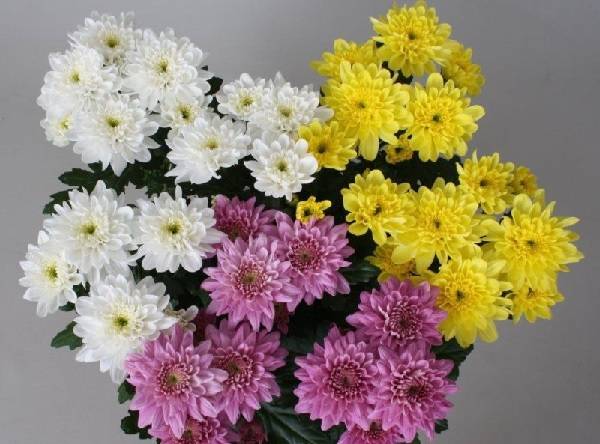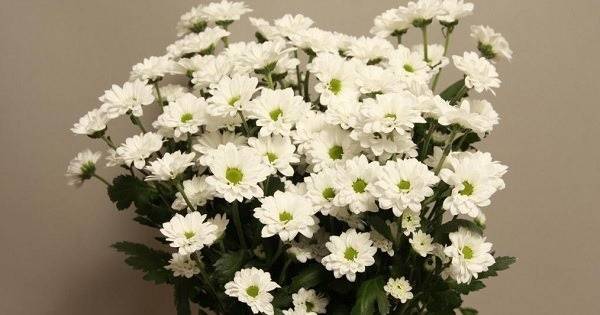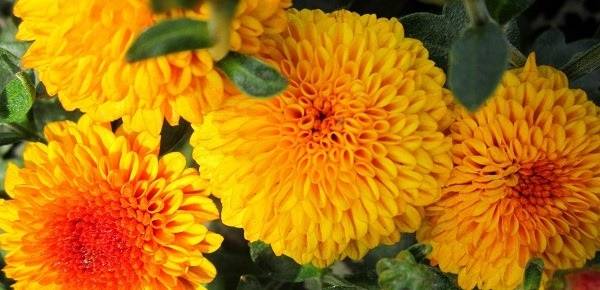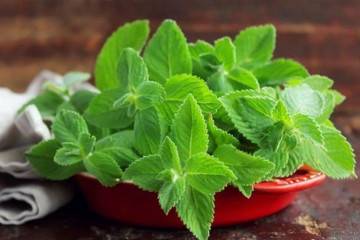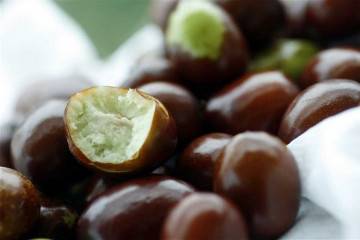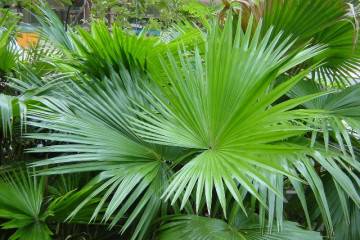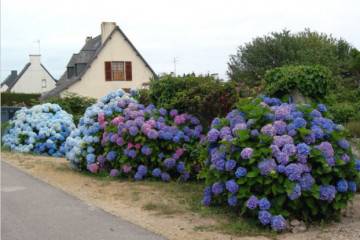Bush chrysanthemum undersized - how to plant and care
Content:
The most luxurious decoration of the autumn garden is bush chrysanthemum. This variety is also popular among florists. Indeed, even a single branch of this plant has many branches with beautiful inflorescences, so it is an almost finished bouquet.
Bush chrysanthemum - what is this flower
This flower is a kind of garden chrysanthemum. Today, this term refers to many varieties and complex hybrids. It would seem nothing unusual, a chrysanthemum habitual since childhood, a bush of which can be found in any garden, but in fact it is a product of many years of selection. Thanks to this long-term work of gardeners, today on the market you can find varieties for any type of climate.
Brief description and history of origin
Chrysanthemum, regardless of the variety, is a crop that always blooms in the fall. Moreover, it is famous for its abundant and long flowering, especially for those varieties that are resistant to low temperatures.
Garden chrysanthemums are perennial plants with straight, most often highly branched stems. The height can be different: from 25 to 100 cm and above. However, most often these flowers - perennial bush chrysanthemums - are undersized. Thanks to this, they can be grown not only in the garden, but also in containers on balconies and terraces.
Their rhizomes are thickened, rather powerful. Leaves can have different shapes, they also differ in the degree of fluff. But one of their main features is a specific aroma, bitter and fresh, which literally cannot be confused with any other.
Chrysanthemum inflorescences are baskets in which there can be up to a thousand tubular flowers. Their shades can be different, there are burgundy, pink, yellow, and lilac flowers.
Breeders began to breed chrysanthemums only in the 19th century. In Europe, these perennials first became popular in France and England, and only then spread throughout the continent. Many varieties have been bred in the United States (mainly in California), as well as in Japan, where climatic conditions are most conducive to such experiments.
Division of spray chrysanthemums into groups
Several attempts have been made at various times to classify these colors. For example, V. Maoshen's classification, created in 1959, is popular, but it includes many Chinese and Japanese varieties that are not so common in Europe. Therefore, a somewhat modernized classification created by the Institute of Horticulture of the GDR is still relevant. The main types of chrysanthemums in it are distinguished by the shape of the inflorescence. They are discussed in more detail below.
Feathery chrysanthemums
This category includes varieties with dense double inflorescences, and the ends of their tubular flowers may be pointed, resembling beaks or feathers. The middle of the chrysanthemum is completely covered with petals.
Simple chrysanthemums, or semi-double
These are plants with small inflorescences slightly resembling chamomile. Their middle is open, it remains clearly visible, and one or more rows of petals are located around it.
Bristly, or thistle
These bush chrysanthemums are a bit like feathery ones, but they are distinguished by a more elongated shape of pointed petals. In this they resemble a thistle, hence their name.
Anemone chrysanthemums
They look a little like semi-double chrysanthemums, but differ in a more convex middle, which, as it were, rises above slightly drooping petals, they can form from one to three rows. This variety includes varieties such as Stalion and Stressa Purpl.
Spoon chrysanthemums
In this case, the name also speaks for itself. These chrysanthemums are distinguished by the characteristic shape of the petals, at the base they have a small width, and towards the end they greatly expand, so that they really resemble a spoon.
Chrysanthemum fantasy
This group appeared recently, it includes relatively young varieties of Japanese selection. They resemble feathery chrysanthemums, but have longer petals.
Popular undersized varieties for growing in the country
Whether it is a yellow bush chrysanthemum or a brighter and more unusual lilac variety, each variety has fans. So it is worth choosing flowers in accordance with the characteristics of a particular site and garden environment.
Mascot
It is a dwarf curb variety of chrysanthemums. It is distinguished by a very bright color, almost a beetroot shade. Despite the fact that these flowers reach only 30 cm in height, they look very impressive, since their branches themselves form an ideal spherical shape.
Snow White
As the name implies, this is a low-growing bush chrysanthemum. It is distinguished by highly branched bushes, which also practically independently form a spherical shape.
Planting is possible not only as a border or in the foreground of a variegated flower garden, but also in a container that will stand on a balcony or terrace.
Ausma
It is a very beautiful and vibrant variety. It is a fairly tall and lush spherical bush. And his inflorescences are quite large, they can reach 4 cm in diameter. But the most important thing is their bright orange hue, sometimes with bronze tones. This variety blooms from August to the first frost.
Alexandrite
Another variety with rather large flowers, their diameter can be up to 5 cm. Its petals are white, but the middle is yellow-pink.
Barbie
This is a very beautiful pink variety of bush chrysanthemums. It has large flowers, up to 6 cm in diameter. It belongs to varieties of medium flowering, that is, its flowers do not open until August.
Smile
This is a very interesting variety, its flowers are lilac or purple. The diameter of the inflorescence can reach 8 cm.
Planting spray chrysanthemums in the garden
Whether it is a green bush chrysanthemum or any other type of plant, it is very important to create suitable conditions for it and follow all the rules of agricultural technology.
Seat selection
This plant needs such a plot in the garden so that it is reliably protected from the wind, and at the same time, so that the plant is not hot there. The lighting should be good, but partial shade is needed at noon and immediately after lunch.
How to prepare the soil and flower for planting
Caring for bush chrysanthemums should not cause any difficulties. These plants prefer slightly acidic soils; such a soil does not require special preparation. But it is important that the site is well drained.
Features of planting chrysanthemums before winter
Both ordinary and low varieties tolerate autumn planting well, since they do not need a long daylight hours. The main thing is to have time to do everything before the first frost so that the plant can take root. Then it remains only to cover the bushes for the winter with fallen leaves.
How to care for a plant
Chrysanthemums are light-loving plants, but they prefer diffused lighting. If they are grown not in the garden, but on the windowsill, it is advisable to display the flower container on the west or east window.
Watering rules and humidity
Watering these plants needs moderate watering, with the exception of spring, during this period it can become more abundant, but it is still very important not to overmoisten the soil. In the summer, spraying the leaves with water will also be required, although in general most varieties are quite drought tolerant.
Top dressing and soil quality
To achieve abundant flowering of these red, yellow or white flowers, you need regular feeding, at least every two weeks. For this, not only mineral, but also organic fertilizers are used.
Pruning and replanting
In order for new branches to appear on the bush chrysanthemum, you need to use methods such as pinching and pruning. For large-flowered varieties, it will be necessary to cut off all lateral shoots for these purposes so that the main one branches well. It is recommended to pinch varieties with small flowers above the fifth leaf.
Wintering a flower
In most Russian regions, preparation for wintering a flower should begin in September. Before winter, fertilizers based on phosphorus and potassium are applied, after flowering, the plants must be cut off at a height of 10 cm above the soil level, then these shoots are covered with dry straw or spruce branches.
Features of flowering plants
This plant blooms later than everyone else in the garden. This is its main advantage and feature.
The dormant period for this plant begins in late autumn and lasts all winter. At the same time, active growth is observed in spring and in most varieties - in early summer. And the flowers open in August or early autumn.
There are different forms of flowers. All of them were described in the above classification, these are, for example, semi-double inflorescences with three rows of reed flowers, pompom (collected in the form of a ball), anemone, etc.
After flowering, the main task of the grower is to remove dried flowers and leaves, as well as cut off all damaged branches.
Flower reproduction methods
There are several main ways of propagation of bush chrysanthemums - cuttings, seeds and dividing the bush.
Propagation by cuttings
This is the most common way of plant propagation. You can either buy a ready-made cutting and plant it in the ground in the spring, or pinch off a side shoot from an already growing bush. Such cuttings take root very quickly, there are no problems with them.
Propagation using seeds
This method is considered the most difficult, therefore it is not very popular. As a rule, in this case, chrysanthemums are grown through seedlings, that is, the seeds are sown into the soil in small containers, they arrange something like a mini-greenhouse, look after the sprouts, discard substandard seedlings and, only after the plants get stronger, they are planted in an open priming. The last stage takes place at the beginning of summer.
Reproduction by dividing the bush
It is less troublesome than growing from seed. Its advantage is that dividing the bushes allows the plant to heal. It is best to carry out this procedure in the spring and immediately plant the resulting cuttings in open ground.
Growing problems, diseases and pests
Chrysanthemums are not too susceptible to disease, except that with too much watering, fungi and mold can appear. In this case, they try to get rid of the affected leaves, and the amount of moisture is reduced. As for various pests, these are mainly aphids and chrysanthemum nematodes. In the first case, treatment with drugs such as calypso helps; in the second, a phosphamide solution is used.
In general, there should be no special problems with bush chrysanthemums. Subject to the regime of watering and feeding, they will delight the gardener with their flowering for a long time.
